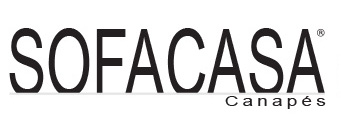
The type of capital stock a company chooses to issue will depend on its specific needs and goals. Some companies may issue only common stock, while others may choose to issue a combination of common and preferred stock. As an example, during trading on December 4, 2009, the price of an ownership share of Intel rose by $0.59 to $20.46, while a share of Capital One went up by $1.00 to $37.92. Stocks, bonds, mutual funds, and exchange-traded funds can lose value if market conditions decline.
What is a Capital Stock Formula in Accounting?
For one, a corporation has the ability to issue (sell) shares to obtain monetary resources and allow investors to become owners (also known as stockholders or shareholders). The Walt Disney Company and General Electric, as just two examples, are corporations. They exist as legal entities completely distinct from the multitude of individuals and organizations that possess their ownership shares (also known as equity or capital stock).
Equity Multiplier (Overview: Definition, Formula, Ratio, Analysis)
In addition to providing shareholders with ownership interests, capital stock is also used by a company to raise funds for its operations. When a company issues new shares of capital stock, it typically sells them to investors in exchange for cash. This cash can then be used by the company to finance its operations and investments. Incorporation allows an organization to be viewed as a separate entity apart from its ownership.
- The price of the stock is influenced by supply and demand factors in the market, among other variables.
- Companies can issue new shares whenever there is a need to raise additional cash.
- When a company issues new shares of capital stock, it typically sells them to investors in exchange for cash.
- Issuing too many shares in a company’s capital stock may also have some drawbacks.
How to Compare Common and Preferred Stock
Overall, the method used to value capital stock will depend on the specific circumstances of the company and the type of capital stock being valued. Adam Hayes, Ph.D., CFA, is a financial writer with 15+ years Wall Street experience as a derivatives trader. the basic form of capital stock is Besides his extensive derivative trading expertise, Adam is an expert in economics and behavioral finance. Adam received his master’s in economics from The New School for Social Research and his Ph.D. from the University of Wisconsin-Madison in sociology.
- Trexquant Investment LP now owns 33,156 shares of the company’s stock valued at $489,000 after buying an additional 6,193 shares during the period.
- Other large investors have also recently modified their holdings of the company.
- Another advantage in the issuance of capital stock is a company’s ability to sell shares (or ownership) to individuals with skills and expertise that can help scale the business.
- Capital stock is the common stock and preferred stock that a company is allowed to issue according to its corporate charter.
- Hedge funds and other institutional investors own 30.19% of the company’s stock.
Owning stock gives you the right to vote in shareholder meetings, receive dividends if and when they are distributed, and the right to sell your shares to somebody else. For economists, capital stock is the source of economic output (such as produced goods or assets used in the production of goods or services) allowing an economy or nation to produce income. However, a company can choose to amend its articles of incorporation or charter allowing it to increase its capital stock. Any value paid by an investor above the par value will be considered as “additional paid-in capital” and will also be recorded on the company’s balance sheet. The par value per share is an arbitrary number assigned to the shares and will be recorded as paid-in capital on the company’s balance sheet.
Corporations typically sell their shares to investors in order to raise capital to fund their business operations. In exchange, investors receive partial ownership of the company, including dividends or voting power. The number of outstanding shares, which are shares issued to investors, is not necessarily equal to the number of available or authorized shares. BTIG Research upped their price target on Stewart Information https://www.bookstime.com/ Services from $68.00 to $70.00 and gave the stock a « buy » rating in a research note on Monday, April 29th. Finally, Stephens reiterated an « overweight » rating and issued a $79.00 target price on shares of Stewart Information Services in a research note on Thursday, April 25th. Two equities research analysts have rated the stock with a hold rating and two have issued a buy rating to the company’s stock.
Insider Buying and Selling at Dave & Buster’s Entertainment
Unlike outstanding shares issued to shareholders, treasury shares or treasury stock do not grant voting rights or right to dividends. Authorized capital stock is the maximum amount of shares a company can issue, as specified in its corporate charter or articles of incorporation. Issued capital stock is the actual number of shares a company has issued to its shareholders. Look for the line item “Total Equity.” This is the company’s capital stock. Capital stock is the maximum number of shares a company is authorized to issue to investors.

Subscribe to be notified of new content on MarketSplash.
When you invest, you make choices about what to do with your financial assets. Most often, stocks are bought and sold on stock exchanges, such as the Nasdaq or the New York Stock Exchange (NYSE). After a company goes public through an initial public offering (IPO), its stock becomes available for investors to buy and sell on an exchange. Typically, investors will use a brokerage account to purchase stock on the exchange, which will list the purchasing price (the bid) or the selling price (the offer). The price of the stock is influenced by supply and demand factors in the market, among other variables. Stocks are issued by companies to raise capital to grow the business or undertake new projects.
The Basic Accounting Equation
- Because these cases are less common, the specific financial accounting issues involved with this degree of ownership will be deferred until a later chapter.
- It is important to note that par value is a set dollar amount assigned to each common share.
- FinTrust Capital Advisors LLC now owns 309 shares of the basic materials company’s stock worth $41,000 after buying an additional 209 shares during the period.
- The company has a debt-to-equity ratio of 0.33, a current ratio of 1.95 and a quick ratio of 2.11.
- The difference between the par value and the sale price of the stock is logged under shareholders’ equity as additional paid-in capital.
For countless individuals and groups around the world, the most popular method of investment is through the purchase and sell of these shares of corporate ownership. Although a number of other types of investment opportunities are available (such as the acquisition of gold or land), few evoke the level of interest of capital stock2. On the New York Stock Exchange alone, billions of shares are bought and sold every business day at a wide range of prices. As of December 4, 2009, an ownership share of Ford Motor Company was trading for $8.94, while a single share of Berkshire Hathaway sold for thousands of dollars. A company’s capital stock is composed of common stock and preferred stock.
